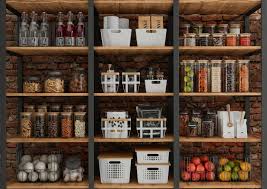Mastering Storage & Organization: Tips for a Clutter-Free Home
2024-09-02
In today’s fast-paced world, maintaining an organized and clutter-free home can be a challenge. However, effective storage and organization are key to creating a functional and stress-free living environment. Whether you’re dealing with a small apartment or a spacious house, these tips will help you optimize your storage solutions and keep your home in order.
1. Assess Your Needs
Before diving into organization projects, take time to assess your storage needs:
- Identify Clutter Hotspots: Determine which areas of your home are most prone to clutter. Common trouble spots include closets, kitchen cabinets, and home offices.
- Evaluate Storage Space: Look at the available storage space in your home and consider whether it’s being used effectively. Assess closets, cabinets, and under-bed areas for potential improvements.
- Consider Lifestyle: Think about your lifestyle and storage needs. For example, a growing family may need more space for toys and sports equipment, while a minimalist may focus on sleek, streamlined storage solutions.
2. Implement Effective Storage Solutions
With a clear understanding of your needs, implement practical storage solutions:
- Use Vertical Space: Maximize vertical space by installing shelves or hanging storage. This is particularly useful in small spaces where floor space is limited.
- Invest in Multi-Functional Furniture: Choose furniture with built-in storage, such as ottomans with hidden compartments or beds with drawers underneath. Multi-functional furniture can help reduce clutter and make the most of available space.
- Optimize Closet Organization: Use closet organizers, such as hanging shelves, shoe racks, and garment bags, to keep clothing and accessories neatly arranged. Adjustable rods and shelves can help you customize the space to fit your needs.
- Utilize Drawer Organizers: Keep drawers tidy with dividers and organizers. These accessories help separate items and prevent them from becoming disorganized and chaotic.
3. Adopt a Systematic Approach
A systematic approach to organization ensures that everything has its place:
- Categorize Items: Group similar items together. For example, store all cleaning supplies in one area, and keep kitchen utensils and cookware together. This makes it easier to find what you need and reduces clutter.
- Label Storage Containers: Labeling containers and bins helps identify contents at a glance. Use clear bins or label them with easy-to-read tags for quick access.
- Create Zones: Designate specific zones for different activities or types of items. For instance, create a reading nook with bookshelves and cozy seating, or a craft zone with organized supplies.
4. Maintain Organization
Keeping your home organized requires ongoing effort:
- Regular Decluttering: Periodically assess and declutter your belongings. Donate or discard items you no longer need or use. Regular decluttering prevents accumulation and helps maintain a clean space.
- Daily Habits: Establish daily habits to keep clutter at bay. Spend a few minutes each day tidying up and putting items back in their designated places.
- Seasonal Reviews: Conduct seasonal reviews of your storage and organization systems. Adjust as needed to accommodate changes in your lifestyle or the seasons.
5. Conclusion
Effective storage and organization are essential for creating a functional and clutter-free home. By assessing your needs, implementing practical storage solutions, adopting a systematic approach, and maintaining organization, you can transform your living space into a well-organized sanctuary. With these tips, you’ll be well on your way to enjoying a more organized and stress-free home environment.



